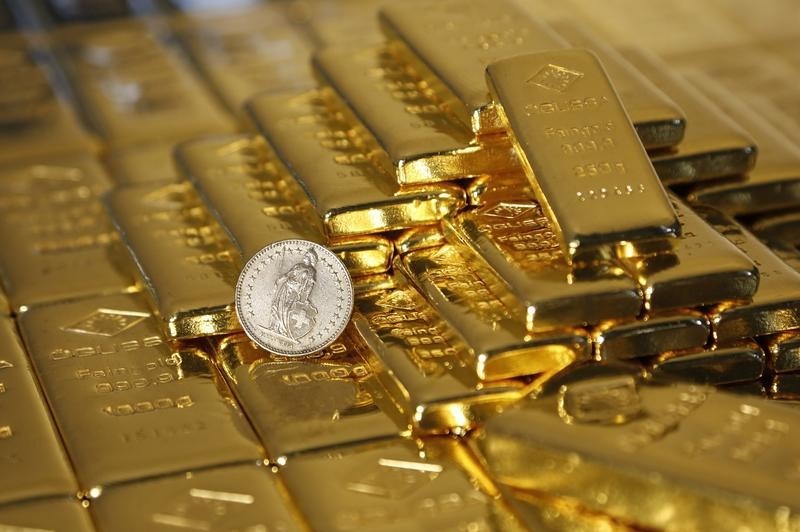Investing.com - Gold futures rose for the fourth straight session on Wednesday to hit a three-month high as a broadly weaker U.S. dollar coupled with ongoing expectations that the Federal Reserve will hold off on hiking interest rates until 2016 boosted the appeal of the precious metal.
Gold for December delivery on the Comex division of the New York Mercantile Exchange hit an intraday peak of $1,174.50 a troy ounce, the highest level since June 30, before trading at $1,173.00 during European morning hours, up $7.60, or 0.65%. A day earlier, gold inched up 90 cents, or 0.08%.
Prices of the precious metal have been well supported in recent sessions amid reduced expectations that the Federal Reserve will hike interest rates before the years end.
A delay in raising interest rates would be seen as bullish for gold, as it decreases the relative cost of holding on to the metal, which doesn't offer investors any similar guaranteed payout.
The U.S. dollar index, which measures the greenback’s strength against a trade-weighted basket of six major currencies, was little changed near a three-and-a-half week low.
Investors were looking ahead to U.S. economic reports on retail sales and producer price inflation later in the day for further clues as to the future path of interest rates.
The timing of a Fed rate hike has been a constant source of debate in the markets in recent months.
Elsewhere in metals trading, copper for December delivery on the Comex division of the New York Mercantile Exchange tacked on 0.1 cents, or 0.03%, to hit $2.389 a pound during morning hours in London.
Government data released earlier showed that Chinese producer prices fell 5.9% in September, the 43rd straight monthly decline and matching the worst reading since October 2009.
Consumer prices rose 1.6% last month, below expectations for 1.8% and down from 2.0% in August.
The soft inflation data added to speculation policymakers in Beijing will have to introduce further stimulus measures to boost growth.
Trade data on Tuesday revealed that China's imports shrank far more than expected in September, falling for the 11th straight month. A slowdown in domestic demand indicated a recovery in the broader economy remains fragile and may need further government stimulus.
The Asian nation is the world’s largest copper consumer, accounting for almost 40% of world consumption last year.
